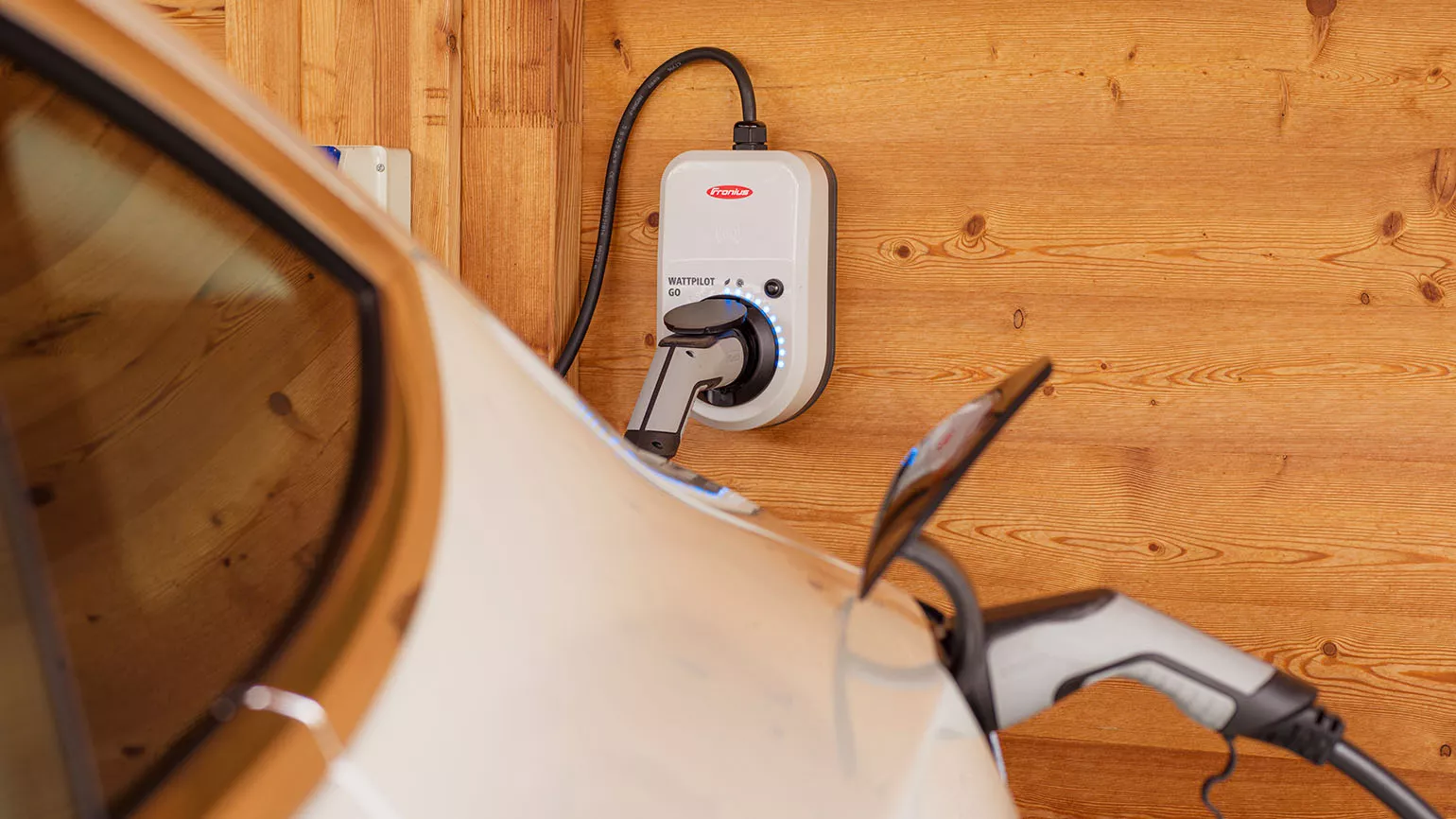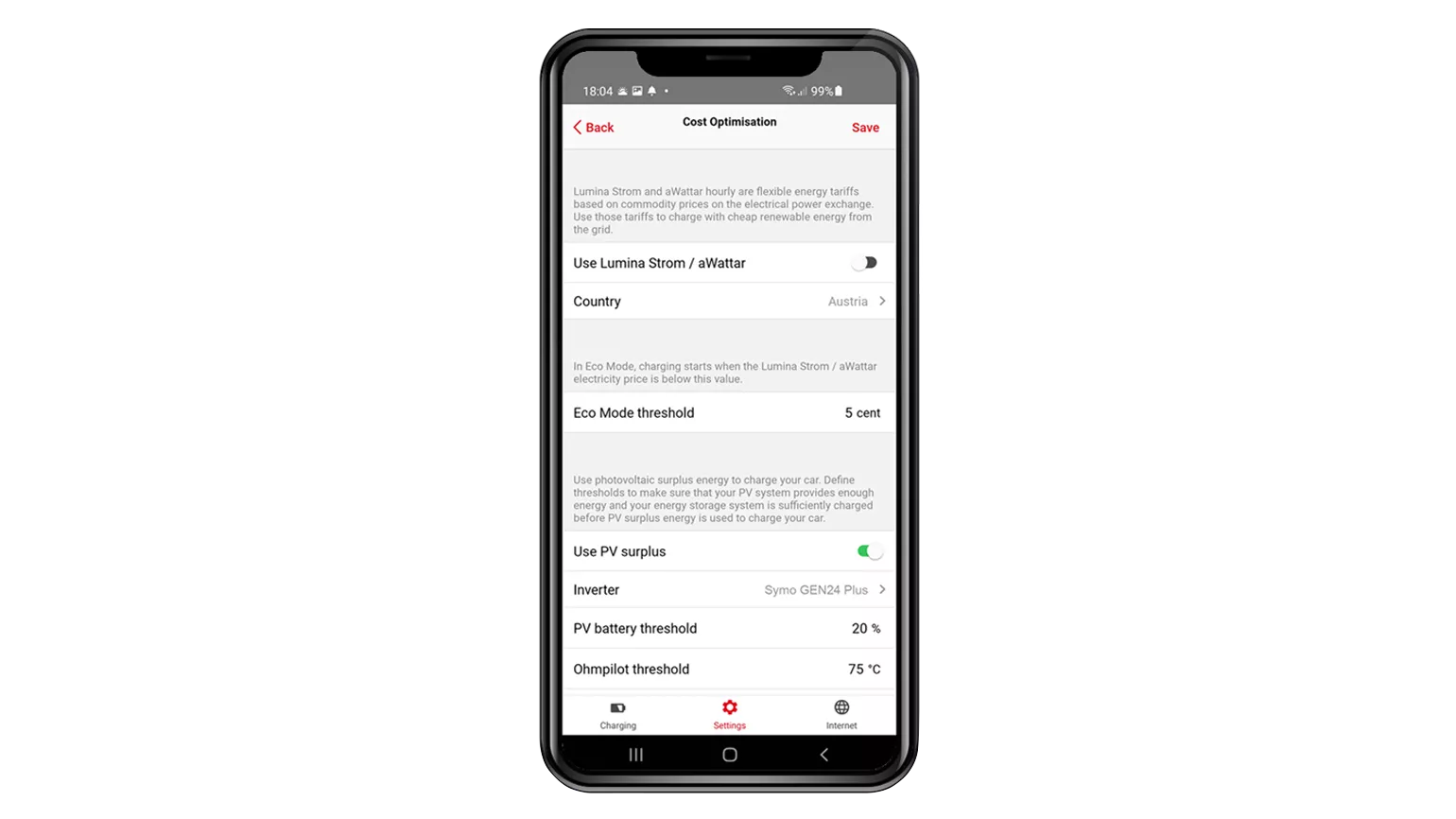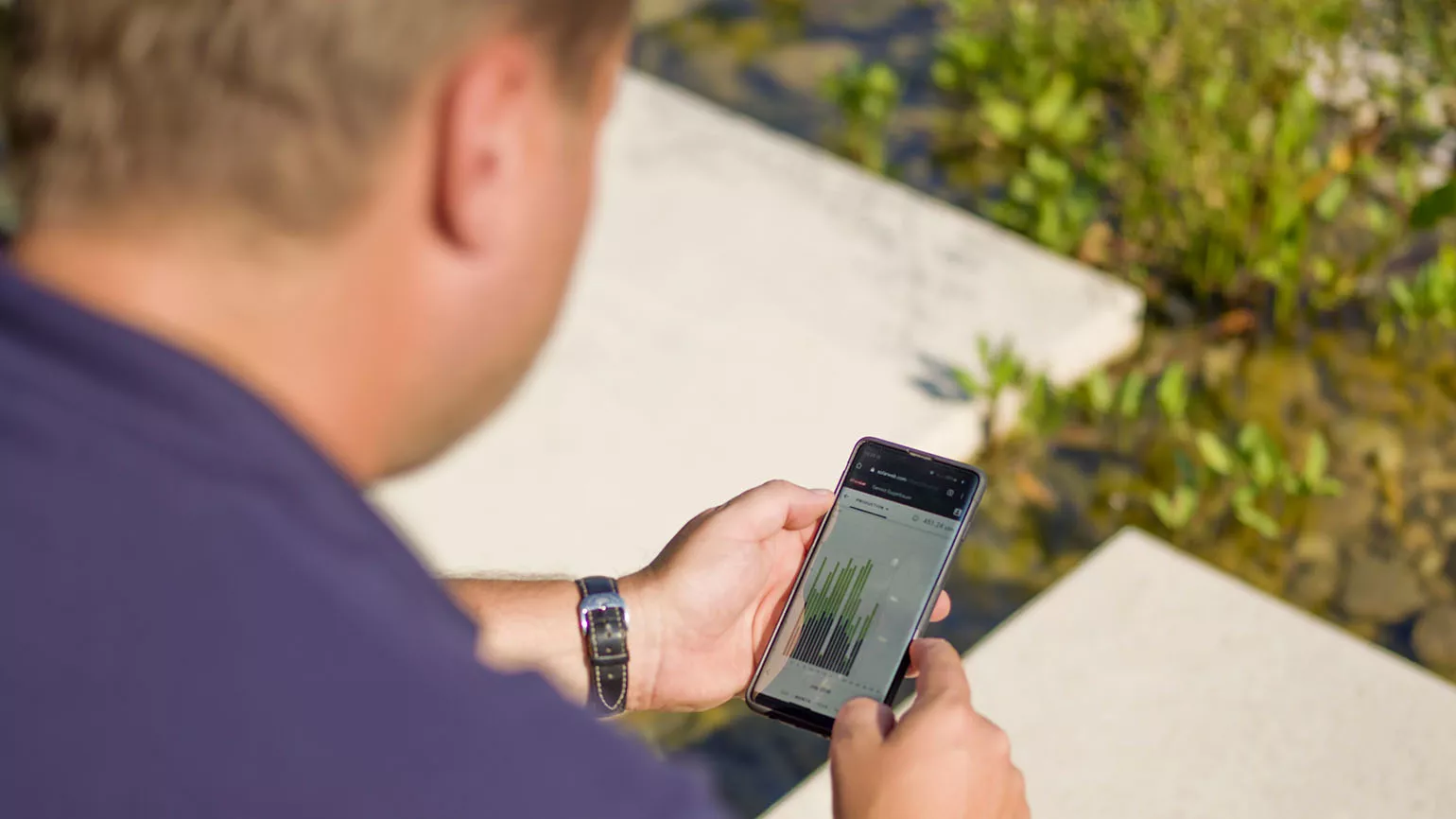Charge your electric car with your own solar power for the lowest charging costs
PV surplus charging with the Fronius Wattpilot
The family uses the Fronius Wattpilot, which automatically charges their electric vehicle as soon as there is surplus PV energy available that is not being used in the household. PV surplus charging means as much as possible of the charge going into the vehicle is from solar power. This brings down charging costs and means the photovoltaic system will pay for itself more quickly due to higher self-consumption.

The best choice for dynamic surplus charging
The Gugerbauer family already had a photovoltaic system so they were keen to use the solar power already available to charge their electric car in a way that was effective and efficient. The family found a solution for dynamic PV surplus charging in the form of the Fronius Wattpilot, which allows surplus PV power from 1.38 to 22 kW* to be used and reduces feed-in to the grid to a minimum. The Wattpilot is one of just a handful of products on the market that automatically switches between single-phase and three-phase charging. The system makes the most of every spare kilowatt of energy by using it for vehicle charging.
A starting output level is specified to set the three-phase output level at which vehicle charging should start. The starting output level indicates how much surplus the photovoltaic system should be producing before the Wattpilot starts charging the car. The three-phase output level is the surplus value that the PV system must have reached in order to switch from single-phase to three-phase charging.
* Up to 22 kW with Fronius Wattpilot Go 22 J

Cheap vehicle charging with renewable energy
“When we were charging the car from the power socket in the usual way at the normal electricity price, we were already saving a third on our fuel costs. Since we’ve had the Fronius Wattpilot, which automatically chooses the cheapest electricity tariff from the grid, and we have a photovoltaic system that the Wattpilot can communicate with, we are saving around half of the fuel costs of running a petrol or diesel vehicle,” owner Gernot Gugerbauer is keen to point out.
The Fronius Wattpilot works by charging the electric car with surplus PV energy rather than feeding it into the grid. This makes great financial sense given rising energy bills. In addition to charging his vehicle with solar power from their own photovoltaic system, Gernot Gugerbauer also charges his electric car with green electricity from the grid. The family also benefits from a variable electricity tariff that tracks current market prices so that the car is charged at the best price available. The Fronius Wattpilot adapts to electricity prices and will charge the vehicle at times when the tariff is at its lowest*.
* Connection to variable electricity tariffs is available in Austria and Germany. Other countries to follow.
Flexible settings using the Solar.wattpilot app
The Gugerbauer family and their installer used the Solar.wattpilot app when setting up the charging solution and to change individual settings. The “Cost optimisation” feature allows charging with surplus PV and limit values in combination with other loads to be activated and set up. If other equipment, such as a battery or Fronius Ohmpilot, are retrofitted at a later date, priorities can be set between the Wattpilot, Ohmpilot and battery to enable optimal energy management.

PV surplus charging saves CO2
The cost savings are not the only benefit of charging an electric vehicle using surplus PV power. Firstly, feed-in to the grid is reduced to a minimum, which relieves the strain on the public grid. And secondly, less power from the grid is needed for vehicle charging, which reduces your carbon footprint. For example, if you were to drive 20,000 kilometres a year on solar power instead of power from the grid, you would save 1.5 tonnes of CO2*.
* Source: PV Magazine, November 2021

Our decision to get an electric vehicle came down to economics and the environment: it made perfect sense both financially and for the environment
explains Gernot Gugerbauer
The advantages of combining a PV system and electric vehicle
- An electric vehicle can be charged with very cheap solar power and so reduce energy bills.
- Dynamic PV surplus charging with the Fronius Wattpilot means as much as possible of the charge going into the vehicle is from solar energy.
- The photovoltaic system will pay for itself more quickly due to increased self-consumption.
- CO2 emissions are vastly reduced.
System data
| System size: | 5 kWp |
| E-charging station: | Fronius Wattpilot Go 11 kW |
| Fronius devices: |
Fronius Symo 4.5-3-S inverter, Fronius Smart Meter |
| Special feature: | Energy management for air-to-water heat pumps, Naturpool circulation pumps and the electric vehicle |



